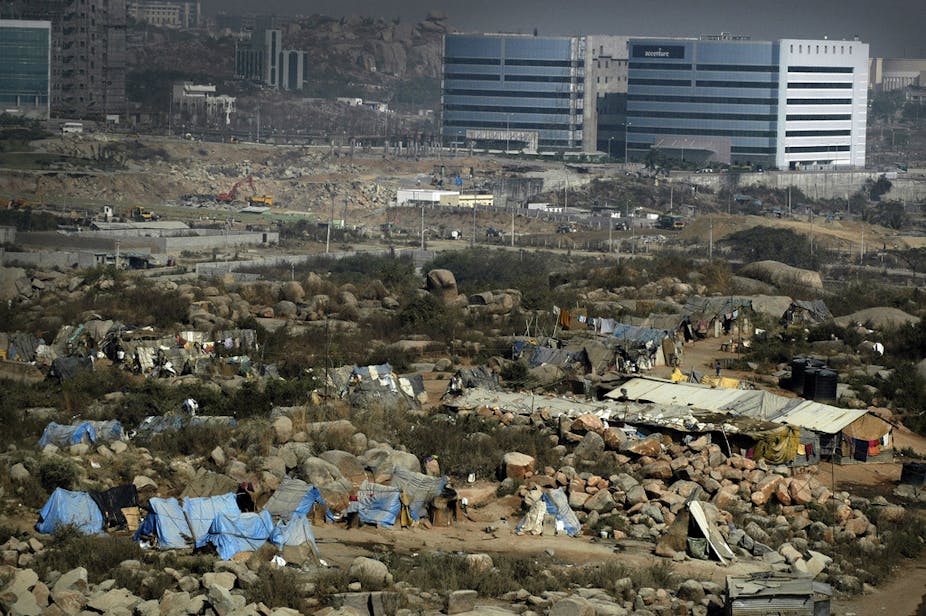Welcome to the State of the Future series. This series addresses 15 global challenges posed by the Millennium Project, an international non-profit think-tank collecting responses for 40 nodes worldwide.
The Australian node is hosted by the Institute for Sustainable Futures at the University of Technology, Sydney. UTS and the Conversation have assembled 15 articles by leading academics, each giving an Australian perspective. Together, they provide a fascinating snapshot of Australia grappling with a shifting future.
Challenge 3: How Can Population Growth and Resources Be Brought Into Balance?
The world’s population reached seven billion in October 2011. The sixth billion was reached in 1999 and it is significant that the seventh billion took the same number of years (12) to add as the sixth. This is relevant because prior to that there had been a progressive shortening of the time taken to add billions to the human population. The first billion was reached in 1804, taking many thousands of years of human evolution to achieve. Thereafter successive billions were added in 123, 32, 15, and 13 years respectively.
There has been a slowing down in the rate of population growth from a high of 2.1% per annum in the late 1960s to 1.2% per annum currently. This slowdown has occurred despite a significant decline in mortality which has seen global life expectancy at birth increase from 47.7 years in 1950 to 67.9 years in 2010. The decline has been driven by a remarkable decline in global fertility from 4.95 births per woman in 1950 to 2.52 births per woman in 2010.
The attainment of 7 billion world citizens is cause for both optimism and concern. Optimism derives from the massive achievement in bringing down global fertility in the last three decades. When I was working in villages in West Java in the early 1970s women were having close to six children on average and I must admit to not being at all optimistic about this being reduced significantly in the short term. Yet family size has been more than halved in a generation. Writers such as Paul and Anne Ehrlich in The Population Bomb were envisaging that the globe’s population may reach as much as 12 billion before stability but the United Nations in the early part of this century projected that it would stabilise at around 9 billion by 2050.
However, there are concerns. The United Nations has recently revised its stabilisation figure at around 10 billion in the latter second half of this century. Fertility decline, especially in Africa, hasn’t proceeded as rapidly as was anticipated. This must be a clarion call to redouble commitments to reduce poverty, extend education (especially of females) and intensify maternal, child, reproductive health, and family-planning programs - especially in Africa.
There are real concerns in terms of feeding perhaps an additional 3 billion world residents this century. Even now, between 850 and 925 million people experience food insecurity and undernourishment. In the New York Times Joel Cohen states that in 2009-10 the world produced 2.3 billion metric tons of cereal grains – enough calories to sustain 9 to 11 billion people. However, the distribution of that grain has left a significant part of the global population underfed.
Pressures on the environment are increasing exponentially as levels and modes of consumption accelerate. It is estimated that a seventh of the world’s population live without an adequate safe supply of water. In several areas climate change is anticipated to exacerbate those pressures. Yet stopping population growth should not be seen as a substitute for the necessity of reducing consumption in high-income countries and moving toward sustainable practices of resource use.
There are some striking changes occurring in the world’s population other than its inexorable growth. Ageing is not just an issue for OECD countries. A corollary of the massive decline in fertility means that growth of aged populations is more rapid in developing countries than in developed countries. In describing the global situtation, Joel Cohen has shown that whereas in 1950, globally, there were more than six children aged 15 or less for every person aged 65 or older, in 2070, the latter will outnumber the former and there will be only three working age people to every 2 people aged 65+.
In 2010 the world passed a significant demographic milestone when the balance between urban and rural inhabitants shifted, with more than a half of the world’s population now living in urban areas. Almost all of the net growth in global population for the rest of this century will be in urban areas of low-income countries. Rapid urbanisation brings with it many challenges.
Seven billion is an important milestone for our planet. The last century has been “the demographic century”, seeing more than 5 billion people added to the world’s population. We need to move as quickly as we can toward a stabilisation of the global population and this can be best achieved by improving the lives of people in low-income countries and achieving a more sustainable pattern of resource consumption, especially in high-income countries.
Comments welcome below.

